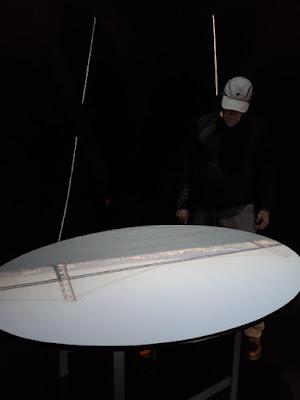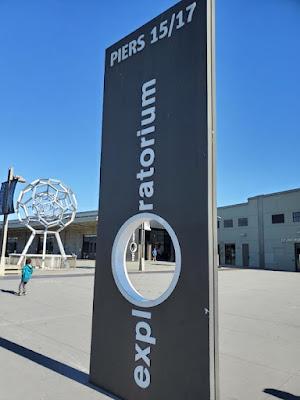
Entrance to the Exploratorium, Pier 15/17, San Francisco, CA.
The Exploratorium on the Embarcadero in San Francisco is a museum for science nerds young and old and everyone else who is curious about the world we live in. Almost all the exhibits invite you to participate, revealing science principals in amazing and fun ways. On a recent visit to the Bay Area, I spent an afternoon there.
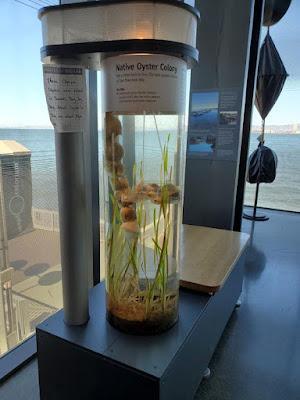
Native oyster colony exhibit on roof of museum.
The museum is organized in six sections: Human Phenomena (math and illusions); Tinkering (making and building); Seeing and Reflections (light, mirrors and sound); Living Systems (life from DNA and cells to organisms and ecosystems); Outdoor Exhibits (winds, tides and natural phenomena); and Observing Landscapes (history, geography and ecology of the Bay Area.)
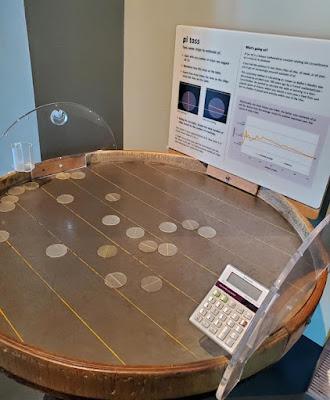
Pi Toss
After purchasing our tickets at the entrance, we headed toward the math section. I have always loved math and was motivated to visit the Exploratorium because I wanted to see their exhibits about the number Pi. (Pi is the ratio of the diameter of a circle and its circumference.) Calculating Pi is a complicated mathematical problem, but there are some simple demonstrations that come close. At the Pi Toss, circular disks with a line drawn across the middle (marking the diameter) are tossed onto a surface marked with parallel lines double the length of the diameter. When the number of disks whose diameters do not cross the lines are divided into the total number of disks, the result is surprisingly close to Pi--3.1416. Knowing the value of Pi is important for any calculation involving circles. The celebration of Pi Day, March 14, originated at the Exploratorium. In another part of the museum you can learn about wave motion by manipulating a giant, slinky-like spring.
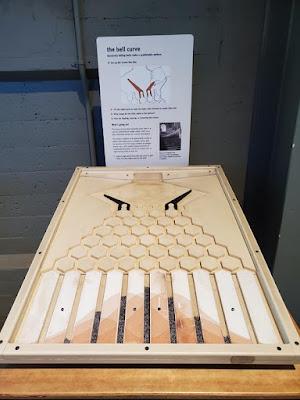
Bell Curve.
Tiny balls rolling through a pinball-like grid demonstrate the bell curve, with the majority of the balls falling to the center and fewer and fewer toward the outer edges.
On the second floor of the museum is a door to the roof deck, with more exhibits and a magnificent view of San Francisco Bay.
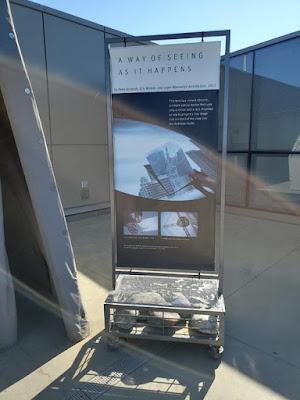
Entrance to Camera Obscura
A small tent on the roof deck houses a camera obscura--in which a pinhole lens and a mirror project the outside image onto a surface inside the tent.
Image of Bay Bridge projected on a table inside the tent. In real time, one can watch tiny boats sailing on the bay and cars driving across the bridge.
At the far end of the museum, in the biological section, there are exhibits of plants and animals, including a view of carnivorous plants growing inside a greenhouse, a demonstration of the process of decomposition in nature, an example of water-resistant plant leaves and more.
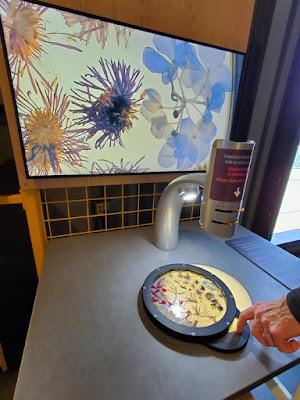
With a digital magnifying glass you can project images of dried flowers onto a large screen.
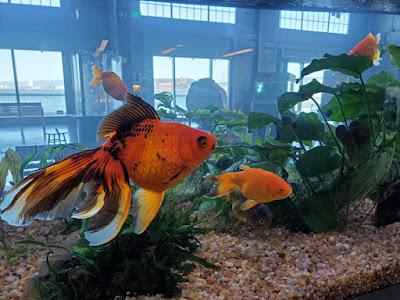
Fish swim inside a large aquarium.
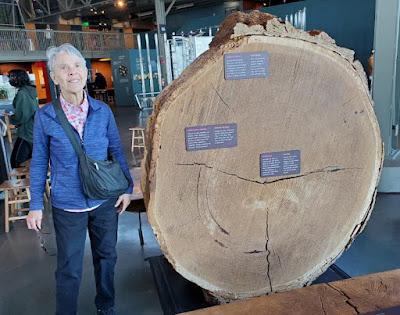
Here I am standing beside a 310 year old Douglas fir tree slice.
About 1691 a pine cone fell from a Douglas fir near Olema, California, in Marina County. About six months later the pinecone sprouted and this tree began its life. When the tree fell down 310 years later, a slice was cut and brought to the museum. The rings tell the story of its life--wet seasons, dry seasons, invasion by insects.
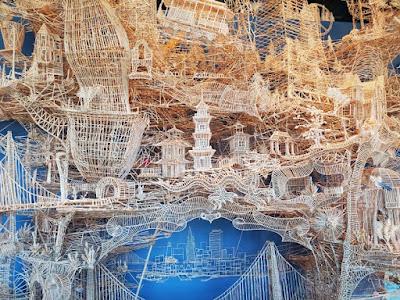
Fantastic structure built of toothpicks--and still under construction!
An ongoing exhibit is an amazing structure built with toothpicks, depicting iconic sights of San Francisco. It is one of just a small sampling of the many exhibits we saw. Another day we'll have to go back to see more.
We visited the Exploratorium on a weekday afternoon, after the large school groups had left for the day. While the museum was still busy, it didn't feel crowded. At the end of our visit we stopped for a snack at the Seaglass Restaurant before driving back across the bridge to Oakland.
The Exploratorium is located at Pier 15, between the Ferry Building and Pier 39, along the Embarcadero in San Francisco.For tickets, hours, and more information about visiting the Exploratorium, go to their website.
